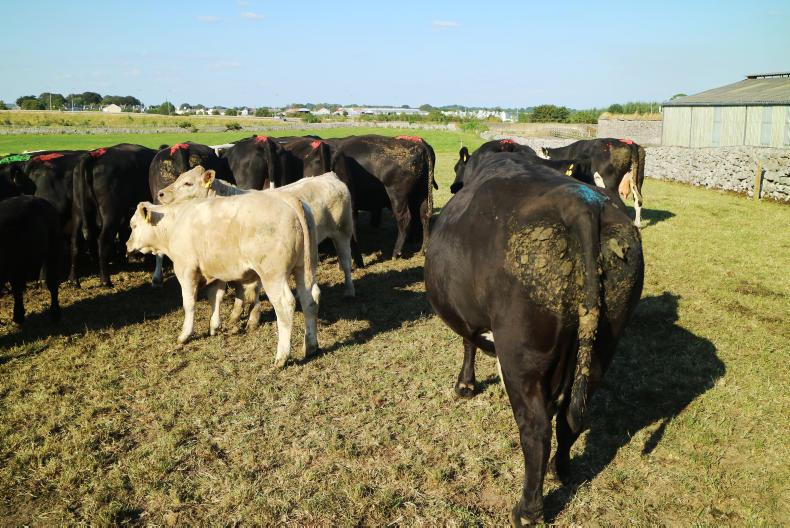Newford Farm continues to take steps to try to deal with the effects of drought. Grass growth has ground to a minimum on all but a few lower-lying or wetter areas of the farm and even where there is some growth it is struggling to get into double-digit figures.
Silage supplementation has now been introduced to all cattle on the farm.
The two groups of 50 cows and calves continue to receive two bales of silage daily and this is supplying in the region of 3kg to 4kg dry matter intake. This is being balanced with a daily allocation of grass, which is being reviewed as days grazing ahead approaches 10, despite efforts to stretch supplies.

Third-, fourth- and fifth-calvers are in a body condition of 2.4,2.7 and 2.9 respectively, with the average liveweight ranging from 638kg to 656kg.
Silage has also been introduced to steers and heifers, with three bales being fed among the 106 head on hand. Again, this is being reviewed and concentrate supplementation is likely to be introduced next week to reduce the level of silage being fed and prioritise remaining bales for cows and calves.
Performance has been relatively good despite tight grass supplies. Calves were weighed on 27 June at an average age of four months. Bull calves weighed 200kg on average, delivering an average daily gain since birth of 1.24kg, while heifer calves weighed 184kg, achieving an average daily gain since birth of 1.15kg per day.

Cows were also condition-scored and weighed and the results are detailed in Table 1. The average weight of all cows was 603kg with a body condition score of 2.5.
The average score fails to identify significant differences between different parity cows. First calves recorded a liveweight of 482kg and an average body condition score of 2.00 that will need addressing.
Last year, this group was separated from the main herd on 10 July and grazed separately. This worked well in helping to improve body condition score and keep these animals on track but this is not an option at present given the lack of grass.
Other options will be considered, including grouping these animals on their own as there is likely to be an element of bullying when silage is introduced while offering concentrate supplementation will also be assessed if drought conditions persist.
Newford Farm continues to take steps to try to deal with the effects of drought. Grass growth has ground to a minimum on all but a few lower-lying or wetter areas of the farm and even where there is some growth it is struggling to get into double-digit figures.
Silage supplementation has now been introduced to all cattle on the farm.
The two groups of 50 cows and calves continue to receive two bales of silage daily and this is supplying in the region of 3kg to 4kg dry matter intake. This is being balanced with a daily allocation of grass, which is being reviewed as days grazing ahead approaches 10, despite efforts to stretch supplies.

Third-, fourth- and fifth-calvers are in a body condition of 2.4,2.7 and 2.9 respectively, with the average liveweight ranging from 638kg to 656kg.
Silage has also been introduced to steers and heifers, with three bales being fed among the 106 head on hand. Again, this is being reviewed and concentrate supplementation is likely to be introduced next week to reduce the level of silage being fed and prioritise remaining bales for cows and calves.
Performance has been relatively good despite tight grass supplies. Calves were weighed on 27 June at an average age of four months. Bull calves weighed 200kg on average, delivering an average daily gain since birth of 1.24kg, while heifer calves weighed 184kg, achieving an average daily gain since birth of 1.15kg per day.

Cows were also condition-scored and weighed and the results are detailed in Table 1. The average weight of all cows was 603kg with a body condition score of 2.5.
The average score fails to identify significant differences between different parity cows. First calves recorded a liveweight of 482kg and an average body condition score of 2.00 that will need addressing.
Last year, this group was separated from the main herd on 10 July and grazed separately. This worked well in helping to improve body condition score and keep these animals on track but this is not an option at present given the lack of grass.
Other options will be considered, including grouping these animals on their own as there is likely to be an element of bullying when silage is introduced while offering concentrate supplementation will also be assessed if drought conditions persist.








 This is a subscriber-only article
This is a subscriber-only article











SHARING OPTIONS: